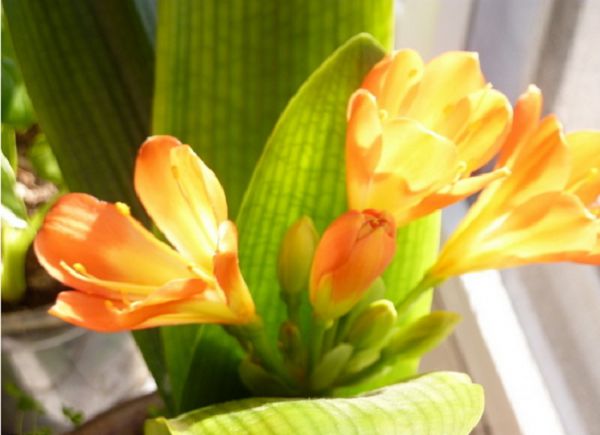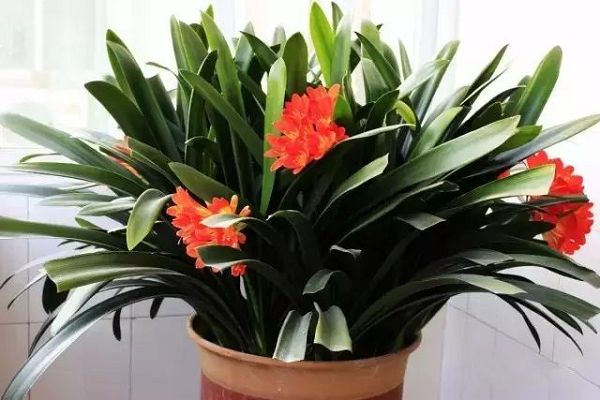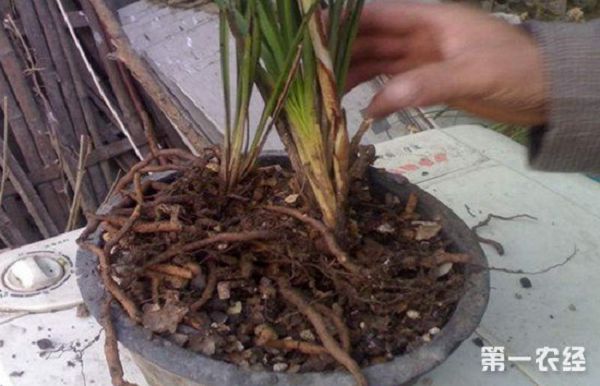Cause Analysis and treatment methods of yellowing of Orchid leaves

Orchids have high appreciation value, and have been regarded by many people as the best choice for greening rooms, but orchids often have yellowing leaves in the process of growth. what on earth is going on and how should they be treated? let's discuss it together.
Cause analysis and solution of yellowing of orchid leaves:
1. Too much watering causes the leaves of orchids to turn yellow (water yellow): this is a situation with more probability. Because there is no proper watering, it is considered that the more orchids are watered, the better the orchids grow, resulting in waterlogging in the roots and yellowing of the leaves.
Solution: so we should according to the watering requirements, so that the watering is thoroughly.
2. Exposure causes orchid leaves to yellowing (burning yellow): plants with large leaves such as orchids are afraid of strong light, which will damage the tissue and cells of the leaves, and the leaves will turn yellow.
Solution: so it's best to put it in a place with weak light.
3. Air drying causes orchid leaves yellowing: dry yellow, due to long-term lack of water or dehydration, although the new leaf color is normal, but the lower leaves gradually dry yellow shedding aging.
Solution: appropriate amount of watering, always observe the weather conditions, so as to water with the weather.
4. Excessive fertilization of orchid leaves results in yellowing of leaves (fat yellow): too much fertilization is commonly known as burning seedlings, which is extremely disadvantageous to the growth of orchids and is easy to cause orchid death, so fertilization is not the more the better. No, no, no.
Solution: this should be the right amount of fertilization, according to the amount of application.
5. Long-term lack of fertilizer in orchid leaves causes leaf yellowing (lack of fertilizer): nitrogen fertilizer has a good effect on replenishing chlorophyll in leaves. If orchids lack nitrogen fertilizer, it will also cause leaves to turn yellow.
Solution: apply nitrogen fertilizer moderately at this time.
6, diseases and insect pests cause orchid leaves yellowing: this situation should carefully observe the yellowing part of the leaves, whether there are insects nibbling or festering.
Solution: if there is, it is the occurrence of diseases and insect pests, the need to prescribe the right medicine.
Experience of orchid leaf conservation:
1. Flower cultivation should be dedicated.
When I first fell in love with growing flowers, I bought what I liked, but in the end, I couldn't manage it, I couldn't manage it properly, and I couldn't raise anything well. Later, I understand that if you want to raise flowers well, you should figure out which type you like, and you should do a little research. No matter what kind of flowers are raised, they will look good. Finally, according to their own preferences, a little accumulation, and strive to raise each of their favorite flowers. In fact, people's life time is very limited, want to master everything, the pursuit of perfection is impossible, so we should be single-minded, no matter what we are doing, we should strive to achieve our goals.
2. Flower cultivation should follow the laws of nature
Flowers have the law of flower growth, there are growing and dormant periods, some flowers grow in spring and autumn, and dormancy in summer and winter; some flowers grow long in winter and dormancy in summer; some flowers like the sun, some enjoy shade, some love dampness, some are suitable for drying, and some are afraid of cold. Some are afraid of heat, and must be treated differently. If you like a pot of flowers very much, look at it every day, fiddle with it every day, water it every day, and fertilize it every day, the end result will only be to harm it. The right way is to respect its habits, give it suitable pots, suitable soil, suitable water, suitable fertilizer, suitable sunshine, suitable temperature, not far or near wait and see, it will grow very well. Liu Zongyuan, a famous litterateur, philosopher and thinker of the Tang Dynasty, has such a saying in the Biography of planting Guo Ligularia: the heaven of shunmu leads to its nature. It means that if you want a tree to live long and grow luxuriantly, you must pay attention to the natural properties of the tree and let it fully develop according to the needs of its nature; if you ignore the nature of the tree, no matter how much love, no matter how much worry is futile. Many of us now grow flowers (including myself), but we don't know the need for flowers at all. Watering and fertilizing are completely random. Many people know that everything should conform to nature, but few people follow it.
3. To grow flowers, you should have a good state of mind.
Individual flower cultivation should be regarded as a hobby in leisure time, not as a career (not including opening a flower shop). Since not everyone can raise flowers well, even gardeners may not raise all flowers well, so growing flowers should have a good state of mind. Take the flower watchers, for example, even if they have been raised for a long time, they do not blossom. Even if the flowers cannot be raised, they might as well raise the leaves. The green leaves do not create a good atmosphere. As far as I am concerned, I generally buy flowers first, and the flowers are withered. If they bloom in the coming year, of course I will be very happy. If they do not bloom, I will continue to drench in water and promote the growth of leaves. If the leaves grow, they will not be removed, and I will let them be green, not colorful, but blue. Isn't that good, too? After all, this is also my working attitude, and I feel comfortable.
4. Don't apply mechanically when growing flowers. All flower cultivation techniques should not be mechanically applied, because of the same flowers, some are planted in the south, some in the north, some indoors and some outdoors. For example, watering: first, it depends on the season and temperature; second, it depends on the types of flowerpots; third, it depends on the growth cycle of flowers.
- Prev

The gentleman orchid is succulent. The yellow leaves grow slowly and the leaves fall off, but the roots are not well raised.
The gentleman orchid is succulent. The yellow leaves grow slowly and the leaves fall off, but the roots are not well raised.
- Next

How to judge and remedy the rotten root of orchid when planting the head of orchid grass and reed
How to judge and remedy the rotten root of orchid when planting the head of orchid grass and reed
Related
- Is the orchid suitable for indoor use? Is it good for the body?
- How to prevent the empty root of orchids?
- What to do after the crab claw orchid is withered?
- Why are the leaves of orchids always yellow? Fertilizing and watering.
- Can the root of the gentleman orchid be saved if it is rotten?
- Diagnosis and treatment of cotton-blowing beetle insects in Cymbidium
- There is a way for a gentleman's orchid to rot.
- What is the most suitable temperature and humidity for the orchid?
- How to raise a gentleman's orchid? Cultivation techniques of Cymbidium
- How to prepare the nutritive soil for the cultivation of Cymbidium

